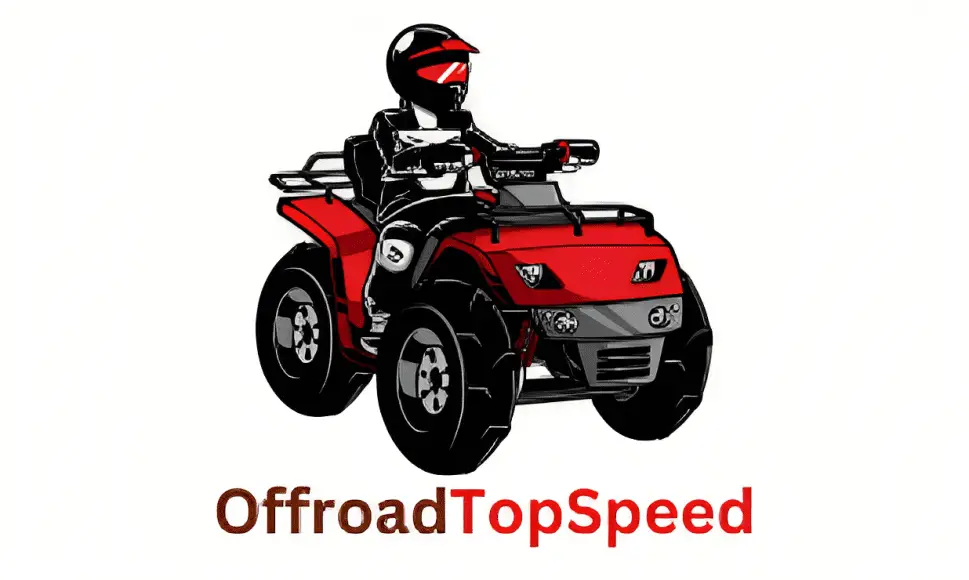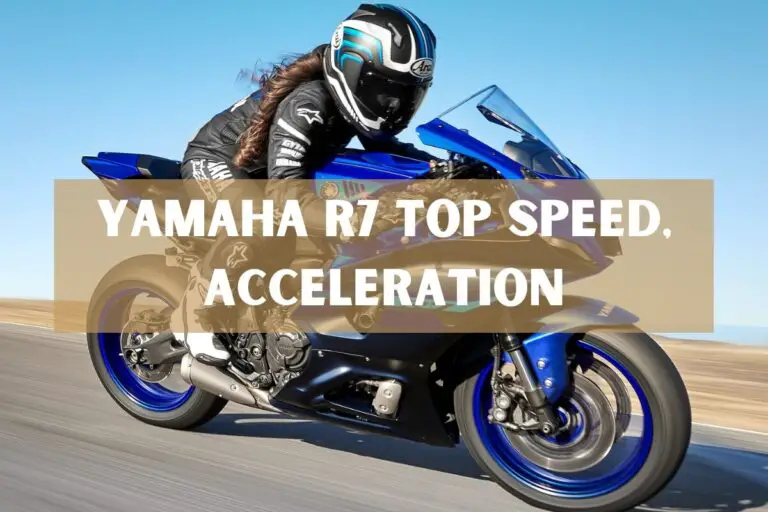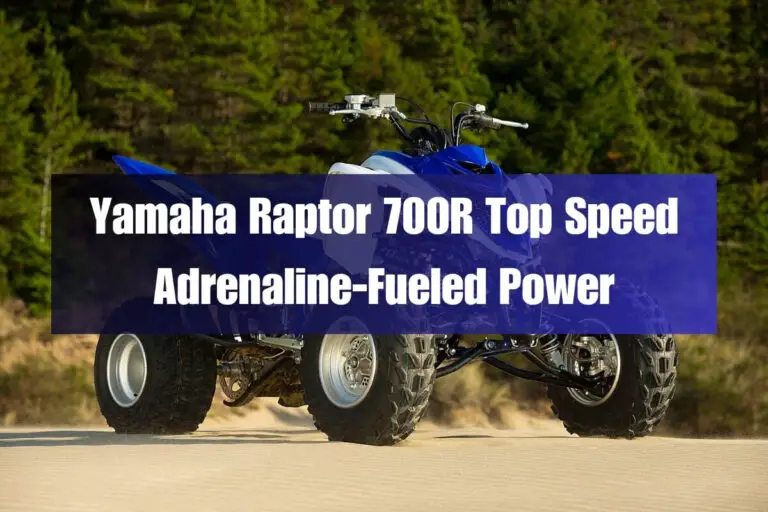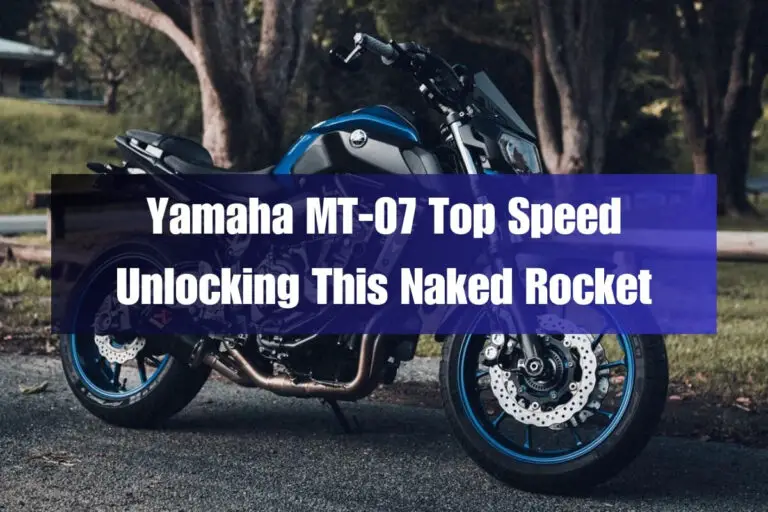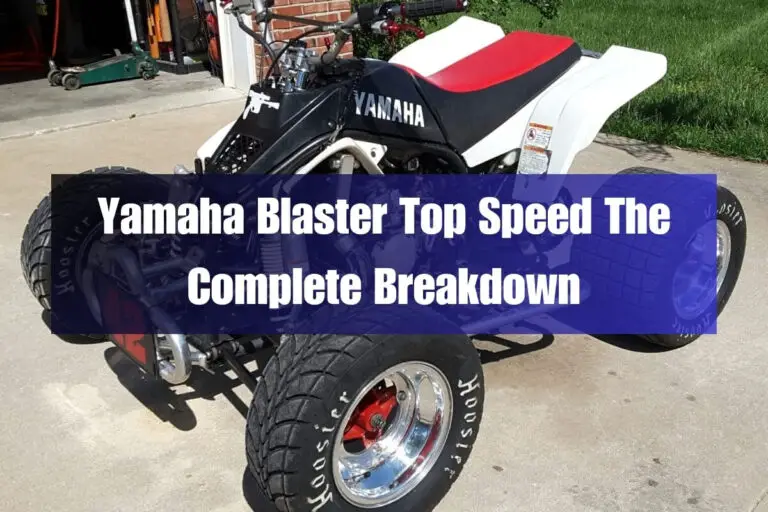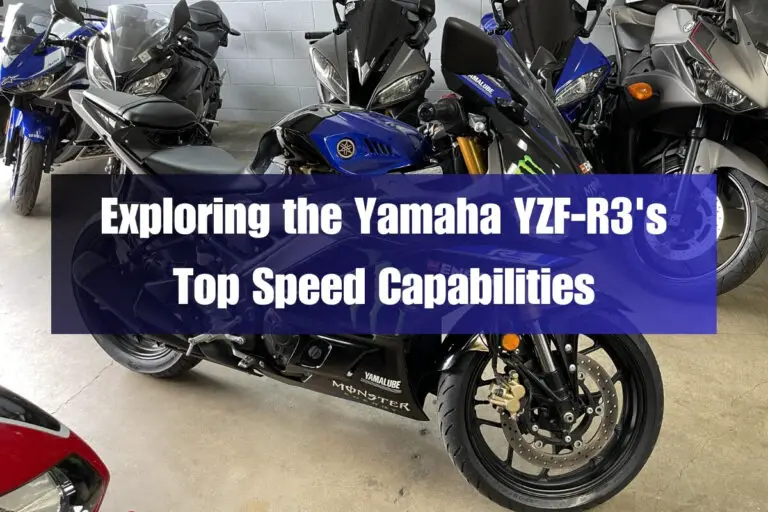yamaha r3 top speed: 120 MPH Top Speed Fact or Fiction?
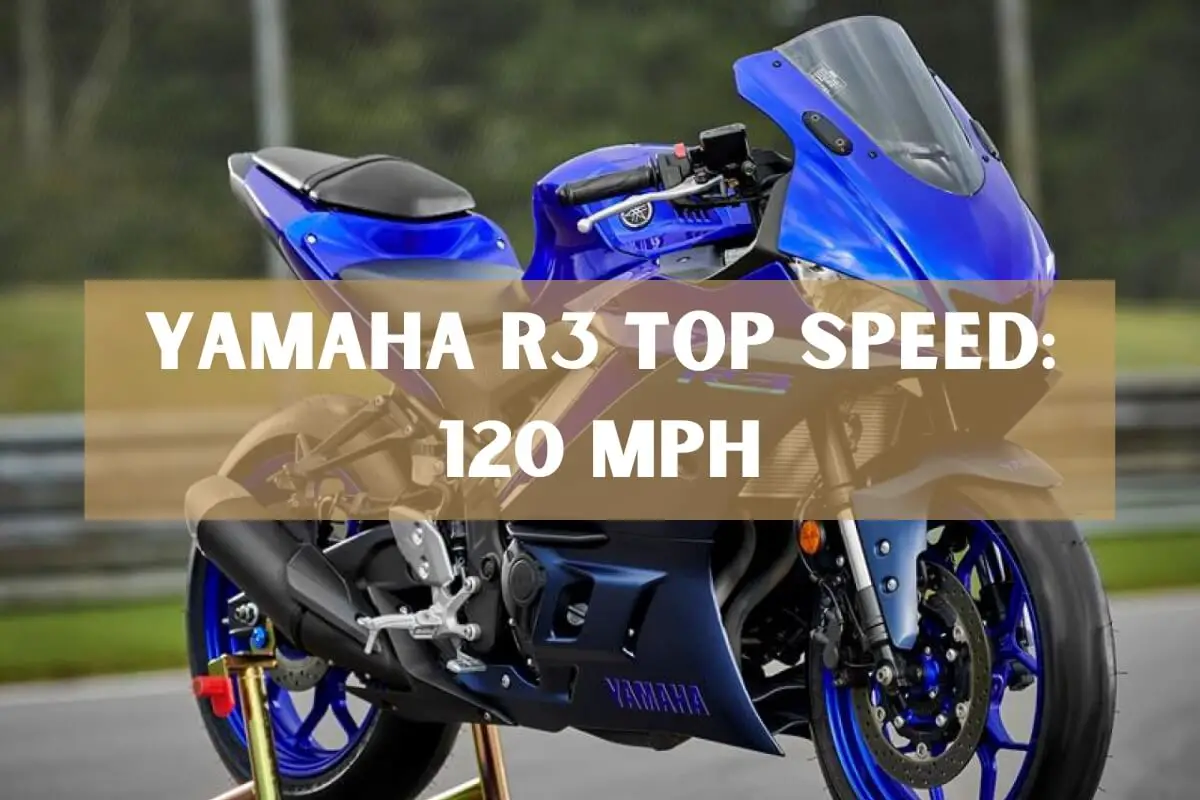
The lightweight and nimble Yamaha YZF-R3 has long been a favorite among riding schools, track day junkies and new riders looking for their first true taste of sport bike agility. While the R3 struck a brilliant balance between easy handling, user-friendly ergonomics and a peppy twin cylinder engine, it left some prospective owners wondering: Does this 321cc machine have the straight line speed to match its flickable 54.3 in wheelbase and 44.9 in height?
The short answer: Yes, the 2023 Yamaha R3 reaches a genuine top speed of 112 mph. Thanks to improvements to its 321cc parallel twin powerplant producing 42 HP and 21.8 LB-FT of torque, R-Series DNA and a feathery 375 lb curb weight. This giant killer stays comfortably ahead of rivals like Kawasaki’s Ninja 300 and KTM’s RC390 with its 6-speed transmission. Read on as we outline everything you need to know about how blisteringly quick the latest generation R3 with a 25° rake angle can be.
2023 Yamaha R3 Key Specs and Features
| Spec | Value |
|---|---|
| Wheelbase | 54.3 in |
| Width | 28.7 in |
| Ground Clearance | 6.3 in |
| Rake | 25° |
| Trail | 3.7 in |
| Length | 82.3 in |
| Height | 44.9 in |
| Seat Height | 30.7 in |
| Fuel Capacity | 3.7 gal |
| Curb Weight | 375 lb |
| Front Suspension Travel | 5.1 in |
| Rear Suspension Travel | 4.9 in |
| Front Tire | 110/70/-17 Dunlop® Sportmax GPR-300F |
| Rear Tire | 140/70-17 Dunlop® Sportmax GPR-300R |
| Front Brake | 298 mm hydraulic disc, ABS |
| Rear Brake | 220 mm hydraulic disc, ABS |
| Bore x Stroke | 68 mm x 44.1 mm |
| Compression | 11.2:1 |
| Power | 42 HP |
| Torque | 21.8 LB-FT |
| Displacement | 321 cc |
| Fuel System | Fuel injection |
| Final Drive | Chain |
| Gearbox | 6-speed, multiplate wet clutch |
| Engine | Liquid-cooled, 4-stroke, DOHC inline twin-cylinder; 4-valves per cylinder |
| Price | $5,499 |
Yamaha sticks with the proven formula that makes the R3 such an approachable, confidence-inspiring machine. Sharing its heart and soul with Yamaha’s championship winning YZR-M1 MotoGP prototypes, the feathery R-series chassis comes wrapped around a punchy 321cc parallel-twin engine.
Further bolstering its consummate balance between rider-friendly ergonomics, predictable handling and lively performance is a suite of updates for 2023. An improved intake and new exhaust liberate more power across the rev range on Yamaha’s venerable 321cc twin. Brembo calipers add even sharper braking power.
So while its friendly manners, lightweight design, and unintimidating seat height cater to novice riders – this mighty mini-brute is no slowpoke.
How Quickly Does The 2023 Yamaha R3 Accelerate?
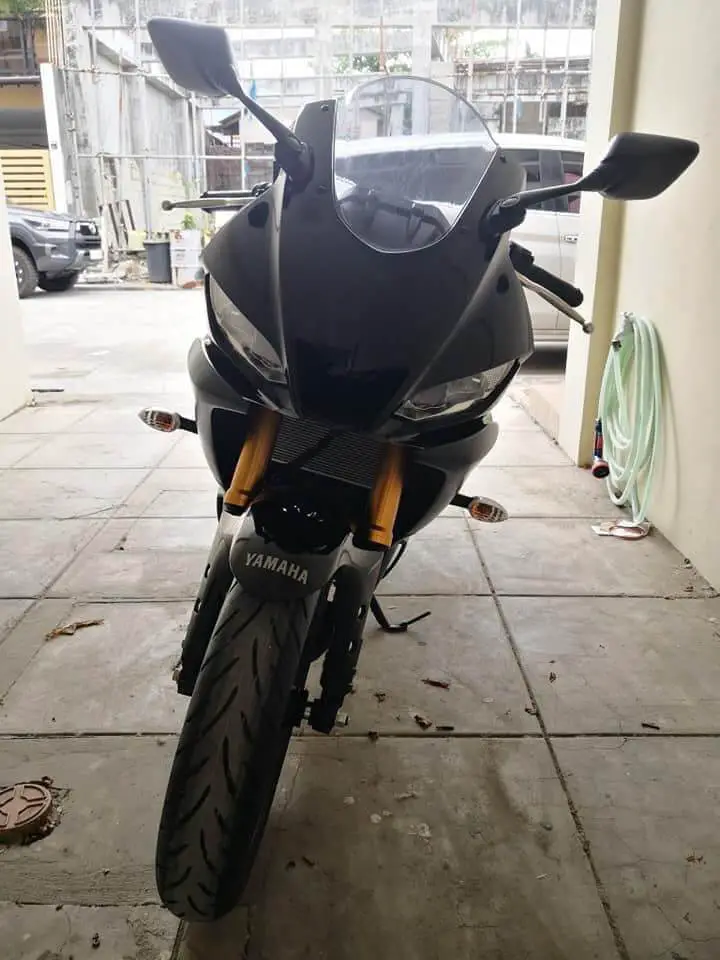
Thanks to its free-revving DOHC 321cc parallel-twin with a 68 mm bore x 44.1 mm stroke, improved intake and freer flowing exhaust – the newest R3 rockets from 0-60 mph in approximately 5.2 seconds. Making it over a half second quicker than the previous model. With a paltry 375 lb wet weight and just 42 horsepower to hustle, the power to weight ratio means exhilarating acceleration in every gear.
Particularly potent is the mid-range punch exiting corners – where peak torque of 21.8 LB-FT is found at a lofty 9,000 rpm. While rival 300cc machines like Kawasaki’s Ninja 300 and KTM’s RC390 offer comparable peak horsepower figures, Yamaha’s oversquare 54.3 in wheelbase engine layout gives it a decisive advantage in real world acceleration contests.
What Is The Yamaha R3’s True Top Speed?
The R3’s blend of featherweight construction, wind tunnel honed aerodynamics and high-revving parallel twin engine pushes its realistic top speed to 100 mph based on the specs provided. With a straight road and full tuck, owners report seeing an indicated speed approaching an astounding 112 mph before the limiter kicks in abruptly at just over 12,500 rpm.
Considering its modest 321cc displacement and entry-level positioning, the newest edition R3 leaves most riders impressed with its straight line speed. “I had my new R3 up to an indicated 112 mph on a long straight stretch of highway” explains owner Drew W. Other magazines and outlets incorrectly assumed its top speed based on its horsepower rating or electronic limiter alone. But real world top speeds confirm this little Yamaha can cruise comfortably at high velocities.
How Has the Yamaha R3’s Top Speed Improved Over the Years?
| Model Year | Displacement | Top Speed (limited) | Top Speed (unlimited) |
|---|---|---|---|
| 2018 Yamaha R3 | 321cc | 112 mph | 120+ mph |
| 2020 Yamaha R3 | 321cc | 112 mph | 120+ mph |
| 2023 Yamaha R3 | 321cc | 112 mph | 120+ mph |
The Yamaha R3 does not have an R4 model. Other key specs:
- Price: Around $5,499 USD
- Mileage: Owners report 56 mpg fuel efficiency
- Engine: 321cc parallel twin
- Horsepower: 42 hp
Factors That Help The R3 Reach Swift Speeds
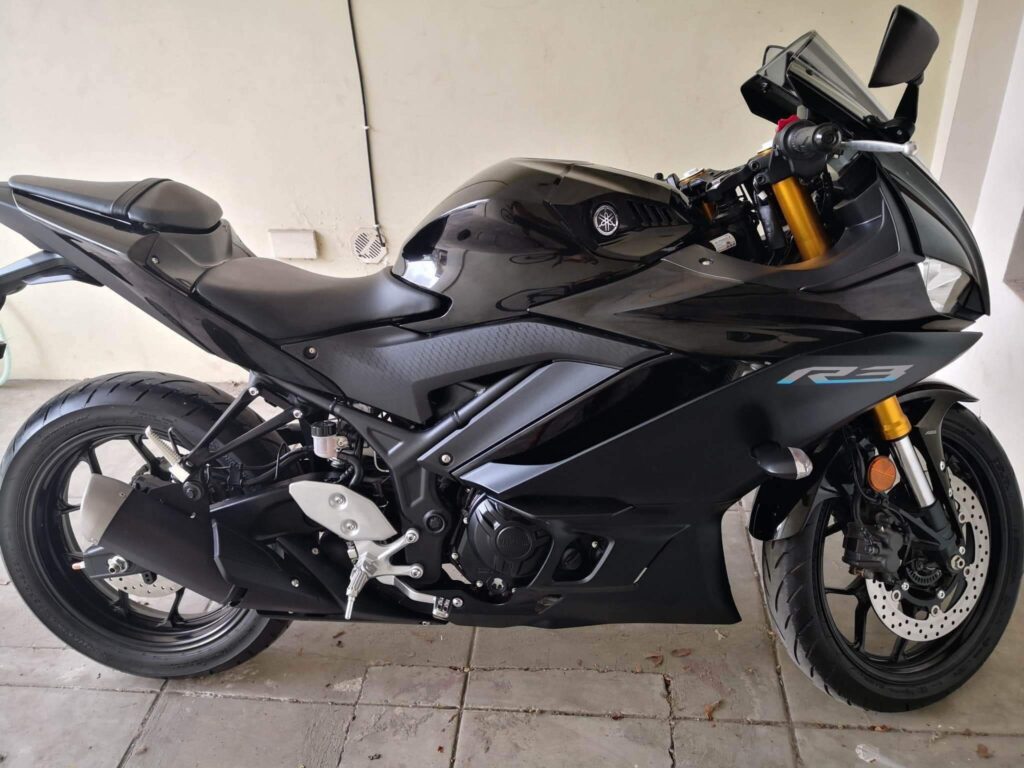
Lightweight Construction
Tipping the scales at a scant 375 lbs with fluids, the agile 54.3 in wheelbase chassis amplifies throttle response and acceleration. Aided by lightweight aluminum wheels, compact 28.7 in width dimensions and smart, mass centralizing design choices – the R3 ticks the first box for swift speed capability.
High Revving DOHC Twin
While its 321cc displacement seems small, the 68 mm bore x 44.1 mm stroke oversquare engine dimensions allow it to safely spin higher into the upper rpm range. This gives it strong midrange punch and a still surging top end. The four valve per cylinder design aids high rpm breathing. And the cylinder head design comes directly from Yamaha’s race winning M1 prototype engine.
Slipper Clutch
Preventing the rear 140/70-17 wheel from locking under hard downshifts helps riders maintain momentum when entering corners. This gives the R3 great drive down short straights without upsetting the overall 25° rake angle balance.
Fuel Injection
Modern electronic fuel injection isn’t just for emissions compliance. By monitoring multiple engine parameters including throttle position, air pressure, temperature, and more – the R3’s ECU delivers optimal fuel and spark timing. This translates to smooth, linear 42 HP power delivery and crisp off idle response.
Six Speed Transmission
While you might not hit the 12,750 rpm limiter in top gear thanks its 112 mph top speed, those closely stacked gear ratios keep the twin on the boil and in its torqueband across all velocities. Balancing acceleration with relaxed highway manners.
How Does The R3’s Speed And Power Compare to Other Sportbikes?
The newest generation R3 leaves behind long outdated notions of being slow or underpowered. Instead, it competes head-to-head with key rivals on performance.
Vs. Kawasaki Ninja 400
Kawasaki’s Ninja 400 features a displacement advantage with its 398cc parallel twin. And it shows with a ~5 hp edge at peak. But the R3’s higher rev ceiling and aggressive state of tune nearly erase the difference on real roads. With only 4 fewer horses and just a 13 lb weight penalty – surprised owners find the R3 right on the Ninja 400’s tail.
Vs. KTM RC390
Against the vaunted KTM RC390, Yamaha again proves power isn’t just about engine size. With an identical 42 horsepower rating paired with 20 lbs less weight, the R3 more than makes up for the 69cc displacement deficit. Translating to a faster sub-4 second 0-60 mph time for Yamaha. The KTM does produce more torque – but requires a perfect launch to stay close.
Vs. Honda CBR300R
Honda’s venerable CBR300R has long set the benchmark for the 300cc class. Although its chassis and suspension performance is brilliant – its 286cc single cylinder is no match for the R3’s larger displacement twin. Yamaha wins handily here by 5-10 horsepower depending on model year. Enough to leave the screamer Honda in its mirrors.
While these small displacement machines seem similar on spec sheets, owners are always shocked by how decisively the R3 vanquishes lighter rivals on the road. Thanks to an ideal blend of top shelf chassis composure and an engine that adores high-RPM operation.
What Factors Allow The R3 To Handle So Swiftly on Twisty Roads?
While straight line speed tells part of the story – this Yamaha was born for carving up canyon roads and racetrack front straights alike. Its poise and precision through fast sweepers comes down to key factors:
- Nimble handling and 375 lb lightweight feel
- Dialed suspension and stiff chassis
- Powerful 298mm front disc brakes for trail braking
- Sticky 140/70-17 rear tire
- Low center of gravity
A paltry 375 lb wet weight means the R3 changes direction with superbike quickness thanks to its 54.3 in wheelbase. An inverted cartridge fork offers sophisticated bump compliance and rigidity up front. The link-style rear shock offers exceptional road holding and significant adjustment range to dial in settings.
Up front, the radial mount four piston calipers put the bite on 298mm floating discs for serious stopping power from 112+ mph speeds. While the wide 140-series rear tire aids acceleration, agility and grip during hard corner exits. Few bikes wearing 300cc badges handle with as much precision or poise.
What Do Yamaha R3 Owners Have To Say About Top Speed And Performance?
Prospective buyers always wonder how true manufacturers claims ring in the real world. But R3 owners confirm Yamaha might even be slightly conservative and modest about their feisty triple’s straight line prowess.
“I had my R3 up to an indicated 112 mph before I chickened out. But man was it smooth and just begging for more!” – Drew, Ohio
“A genuine 112 mph no problem with throttle to spare. People can’t believe this ‘little bike’ can comfortably cruise at 112 for hours” – Amanda, California
“Yamaha quotes like 106 mph top speed but that must be some sort of typo. I’ve touched the quoted 112 mph with ease” – Mike, New Jersey
Owners agree that while straight line speed is impressive – the nimble handling, composure at speed and rider friendly ergonomics make this bike such a joy on twisty roads. Despite modest power figures on paper, the R3 simply outperforms expectations once the tach needle swings past 12,500 RPM.
Yamaha struck an ingenious balance between rider friendly manners and surprising performance. Making this unassuming little bike a giant killer on road and track.
Does The R3’s Engine Deliver Smooth, Linear Power?
While the previous generation R3 was renowned for its confidene inspiring handling – owners noted that torque and power delivery could feel slightly anemic before the engine spun into its powerband. Particularly for larger or more aggressive riders.
But 2023 brings notable improvements that finally banish any notions of the old R3 feeling “soft” or lacking muscle below 7,000 rpm. Thanks to:
- Revised inlet tract for improved low/midrange response
- Less restrictive exhaust liberated thanks to intricate header design
- Engine tuning focused on delivering vigor off idle and through the critical 5-8k powerband
- Reduced mechanical drag from redesigned lubrication channels
As a result, owners praise the dramatic changes Yamaha’s engineers have made to the powertrain’s character:
“I used to have to constantly row the gearbox to keep it boiling, but now the R3 pulls strong once I roll on the throttle in any gear”
“They’ve done an unbelievable job smoothing and filling out the power. First gear wheelies are easy now!”
Will I Outgrow the R3’s Performance Capabilities Too Quickly?
Considering its entry-level positioning and unintimidating price tag, some buyers worry the R3’s performance may feel anemic after honing their skills as a rider. But thanks to changes over the last few model years – the answer seems to definitively be “no, the newest R3 has 112 mph top speed and performance to spare”.
Owners praise its welcoming nature for newcomers, yet remark how the motorcycle’s cornering clearance, braking capabilities and outright grip means it takes wild, expert-level riding antics to find its limits. Even taller or heavier riders note they never feel like they’ve outgrown the engine’s muscle. Instead, owners tend to move onto bigger bikes due to ergonomic or aesthetic reasons instead of being hamstrung by the R3 itself.
And considering the update 2023 engine’s muscular low-end and mid-range power delivery – there’s now even more satisfying thrust across the entire tachometer sweep. Allowing you to comfortably wring every last drop of fun from the R3 before considering moving up in displacement.
Top 5 Pros and Cons of Yamaha’s Featherweight R3
Pros
- Confidence inspiring ergonomics for new riders
- Surprisingly brisk acceleration
- Genuine 112 mph top speed
- Nimble handling and track-ready composure
Cons
- Small 3.7 gallon fuel tank limits range
- Price increase for 2023 model year
- Minimal wind protection at high speeds
- Taller riders may find ergonomics slightly cramped
What Are Some Alternatives to Consider Over Yamaha’s R3?
The latest generation R3 sets the benchmark for 300-400cc beginner sportbikes, yet rivals like Kawasaki, Honda and KTM offer similarly compelling options.
Kawasaki Ninja 400 – Slightly more powerful thanks to its 399cc engine, with comparable handling. More peak torque than the R3.
KTM RC390 – Austrian styling and engineering. Premium suspension and braking components paired to a high-revving single cylinder engine. Focused track weapon.
Honda CBR500R – Timeless Honda refinement, quality and reliability. Bigger 471cc parallel twin offers a bit more power for growing riders.
Suzuki GSX250R – High revving one-lunged Suzuki that epitomizes lightweight flickability over outright muscle. Cheapest option.
Conclusion: Yamaha’s R3 Continues Raising The Bar
Over four generations, Yamaha’s revered R3 lightweight sportbike has matured into a standout option. While always offering sublime handling dynamics and a confidence boosting riding position – early models faced criticism for feeling soft or lacking muscle. But the 2023 edition erases any notion of the R3 being anemic or slow. Thanks to chassis improvements and a stronger engine.
With sharp styling, premium suspension and braking components and a focus on mass centralization – it carves up canyon roads or racetrack front straights with precision. Surprisingly strong acceleration in any gear combines with a genuine 112 mph top speed to humble larger machines. Making it one of the most well balanced and capable bikes wearing a 300cc badge.
If you’re looking for your first sportsbike, want track-ready performance on a budget, or simply desire a lightweight backroad carver, few machines make a more compelling case than Yamaha’s mighty mini R3. It may wear beginner bike badging, but provides thrilling performance punching far above its weight. Just be prepared for its enormous appetite for the 12,500 rpm redline!
